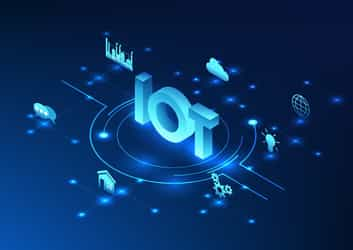
Jan 29, 2019
Blog Digital World A History of Raman Spectroscopy
The principles of Raman spectroscopy have been understood for the past 80 years and are based on the Raman effect, the phenomenon of inelastic scattering of light (Raman scattering), which was discovered by Dr. C.V. Raman in 1928. In the years following its discovery, Raman spectroscopy was used to provide the first catalog of molecular vibrational frequencies.
Originally, extraordinary measures were required to obtain Raman spectra due to the low sensitivity of the technique. Typically, the sample was held in a long tube and illuminated along its length with a beam of filtered monochromatic light generated by a gas discharge lamp. The photons scattered by the sample were collected through an optical flat at the end of the tube. To maximize the sensitivity, the sample was highly concentrated (1 M or more) and relatively large volumes (5 mL or more) were used.
Consequently, the use of Raman spectroscopy dwindled when commercial IR spectrophotometers became available in the 1940s. However, the advent of the laser in the 1960s resulted in simplified Raman spectroscopy instruments and also boosted the sensitivity of the technique. This has revived the use of Raman spectroscopy as a common analytical technique.
In the late 1970s, Raman spectroscopy with an optical microscope was introduced and was used for microanalysis in many fields. Micro-Raman spectroscopy became an important tool in biology, especially for single cell studies. Now, many researchers in various fields use micro-Raman spectroscopy for:
In the eight decades since the discovery, the market for Raman spectroscopy has had plenty of time to mature, yet users continue to find new application areas.
Developments in coherent Raman scattering microscopy applications such as stimulated Raman scattering and coherent anti-Stokes Raman scattering microscopy offer exciting potential in biological imaging applications. Moreover, they offer huge potential for sub-diffraction limited microscopic approaches such as tip-enhanced Raman scattering (TERS), which are now crossing boundaries of spatial resolution that have previously not been accessible with conventional Raman microscopy.
The above is an excerpt from a BCC Research report. For more information on the latest developments in the global market for Raman Spectroscopy, download the free report overview.

From smartphones to satellites, antennas play a vital role in enabling the seaml...

Introduction Artificial Intelligence (AI) and the Internet of Things (IoT) are r...

We are your trusted research partner, providing actionable insights and custom consulting across life sciences, advanced materials, and technology. Allow BCC Research to nurture your smartest business decisions today, tomorrow, and beyond.
Contact UsBCC Research provides objective, unbiased measurement and assessment of market opportunities with detailed market research reports. Our experienced industry analysts assess growth opportunities, market sizing, technologies, applications, supply chains and companies with the singular goal of helping you make informed business decisions, free of noise and hype.